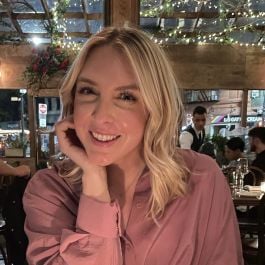Companies with diverse and inclusive teams all have one thing in common: an excellent, inclusive hiring process.
Inclusive hiring is essential to more than just building a more diverse workforce — an inclusive hiring process, when successfully deployed, brings in the best candidates for the job. Bias on the hiring team’s end can eliminate qualified candidates from the process unfairly, and poorly written job descriptions can cause those same candidates to avoid applying in the first place. According to a 2020 survey from McKinsey and Company, an average of 39 percent of candidates choose not to pursue or accept a job if they perceive a lack of inclusion from the organization.
Hiring can be a complex set of processes to evaluate and codify, but that isn’t stopping culture leaders from making moves in the right direction. Organizations like Headway and Belvedere Trading are utilizing a data-focused approach to identify problem areas in all areas of their hiring process, and teams at Calm are applying modern tools to support a growing diverse candidate pool.
Built In had the chance to check in with hiring leaders from all of these organizations to get a sense of how they continually adjust their hiring practices for a more inclusive candidate experience.
Headway is a national, virtual mental health network rewired for access and affordability.
What led Headway to prioritize building a more diverse and inclusive hiring pipeline? What steps did your team take to start expanding the candidate pool?
Headway is building a new mental healthcare system, and mental health impacts most individuals in the US. Having a diverse and inclusive pipeline enables Headway to build products that are inclusive of all users.
Our first step was evaluating our interview process for structured interviewing and assessing where and why we lacked representation. If you post jobs without designing an equitable process, you run the risk of losing great talent in your pipeline. We diagnosed whether candidates were asked the same questions, if interviewer feedback was objective and if candidate management practices were equitable. Understanding this gave us action items to improve our process before we added more candidates into the pipeline.
“If you post jobs without designing an equitable process, you run the risk of losing great talent in your pipeline.”
Our job posts were then vetted for inclusive language, a systemized use of demographic surveys and interview accommodation requests. We then tested job posts in forums specific to underrepresented talent and created sourcing strategies to increase representation in our pipeline.
Having an equitable process gave us confidence that we could implement sourcing strategies and job postings while retaining a diverse pipeline.
What steps led to the most success in diversifying your candidate pool? How does your candidate pool look different now than at the beginning of the process?
Data tracking has played a large role in our ability to diversify our candidate pool. Hiring demographic data provides patterns in candidate activity. Those patterns point towards where to dig deep and problem-solve. We also track the percentage of Headway interviewers and hiring managers who are trained in inclusive hiring practices with a goal of 100 percent completion. We then use our demographic funnel data to help identify whether a hiring team is upholding those practices. For example, if one demographic is passed on at a higher rate than another, we can discern whether the scoring system is impacting those decisions and if there is subjective feedback influencing the decision.
In the two years I’ve been at Headway, our candidate process and pool have drastically changed. When I first arrived, we were a small team with little information to tell us where and why we needed to improve. Investing in tools gave us the data we needed to make clear actionable goals for improvement. In 2023, we saw an average 20 percent increase in underrepresented groups hired across the entire company. We now see greater representation in candidate referrals and representation on our interview panels.
Any recommendations for leaders and talent teams who are looking to build a more inclusive hiring pipeline? What lessons have you learned?
Look inward before you look outward. Often the candidates you want for a role come from a finite pool, and you don’t want to risk placing candidates into a broken interview process. Build an equitable process through structured interviewing and ensure consistency and participation in that training. Only then you can put your best foot forward in the market and attract a diverse pool of candidates.
“Look inward before you look outward.”
I’ve also learned to have multiple parties evaluate how your external communication might land in public forums so that when you’re ready to go to market and attract candidates, your outreaches, job descriptions and talent brand reflect more than one voice.
Calm is a leading mental health brand on a mission to support everyone on every step of their mental health journey.
What led Calm to prioritize building a more diverse and inclusive hiring pipeline? What steps did your team take to start expanding the candidate pool?
At Calm, we believe in bringing your whole self to work and strive to create an environment where everyone feels welcomed, included and empowered to succeed. We know we have a responsibility to build diverse teams with representation from different backgrounds and experiences. We firmly believe diverse teams are more innovative and better at creating and executing ideas to move our business forward.
For candidate applications, we ensure all job descriptions are passed through a bias-scrub tool to keep the language gender-neutral and unbiased. Our recruiting team is also diligent about posting our openings on various third-party sites to ensure our candidate reach is as wide as possible.
In regards to our sourcing efforts, we’ve created a boolean bank for LinkedIn searches along with various resources, such as updated lists of Historically Black Colleges and Universities and LatinX sororities and fraternities, to widen our reach. These efforts have led to a more diverse pool of passive candidates. Hiring teams across Calm have also committed to a two-week pipeline generation period before interviewing referrals to ensure a diverse candidate pool rather than continuously hiring people from their networks.
What steps led to the most success in diversifying your candidate pool? How does your candidate pool look different now than at the beginning of the process?
The actions I outlined above to increase the diversity in our candidate pool would mean nothing without an unbiased and fair interview process. The truth of the matter is that biases exist all around us, and we all have them. Here at Calm, we ensure interviewers and hiring managers across the company have been properly trained on how to run an unbiased interview process.
“The truth of the matter is that biases exist all around us, and we all have them.”
On an ongoing basis, recruiters monitor pass-through rates in the interview process, looking into gender and ethnicity to ensure candidates are progressing equally throughout the process. This allows us to pinpoint specific interview stages and the questions being asked to make sure we’re being inclusive and checking our inherent biases.
Coupling the training and data collection with our application and sourcing efforts has led to the most success in moving the needle on diversity within Calm. In the past 12 months, we’ve seen an increase in the total number of hires that have come from underrepresented groups.
Any recommendations for leaders and talent teams who are looking to build a more inclusive hiring pipeline? What lessons have you learned?
My biggest recommendation to talent acquisition leaders and talent teams is to start with small tangible actions that can move the needle. First, take inventory and assess the data you have at your disposal to determine where you want to focus and what will have the biggest impact. From there, make a timeline or plan on what you want to tackle when, and bring your business partners along with you. Having our leadership team and individual hiring managers invested in increasing diversity in the funnel has made this much easier — it’s a true team effort.
Belvedere Trading is a financial services company specializing in equity index and commodity derivative services.
What led Belvedere Trading to prioritize building a more diverse and inclusive hiring pipeline? What steps did your team take to start expanding the candidate pool?
One of our overarching company objectives revolves around the cultivation of high-performing teams. Central to this mission is the commitment to a balanced environment with diverse teams and equitable opportunities for all individuals. To do this, we are simultaneously focused on expanding our hiring pipeline while also fostering a safe and inclusive workplace for our team members.
While we have always prioritized the outcomes of our initiatives, in recent years we have made a deliberate shift towards a more intentional approach. Recognizing the need for proactive measures, we have implemented various strategies to broaden our candidate pool. This includes revising job descriptions to incorporate gender-neutral language and statements that actively encourage individuals from all backgrounds to apply, adjusting the entry barriers to our interview process to ensure accessibility and inclusivity and developing new partnerships with various student and professional groups.
What steps led to the most success in diversifying your candidate pool? How does your candidate pool look different now than at the beginning of the process?
Our concerted efforts to strengthen partnerships with both local and national student and professional groups have been impactful. We monitor several key metrics to gauge the effectiveness of our initiatives. For instance, we analyze the diversity at the top of the candidate funnel to see when our pipeline experiences growth in candidates from underrepresented groups. Additionally, we assess the origin and source of our candidates to pinpoint the reasons driving their applications. Within a year, the expansion of the top of our candidate funnel has been substantial, and much of this notable growth can be directly attributed to the influence of our partnerships.
“The expansion of the top of our candidate funnel has been substantial — it can be directly attributed to the influence of our partnerships.”
Any recommendations for leaders and talent teams who are looking to build a more inclusive hiring pipeline? What lessons have you learned?
Data is an important part of the story, and I wish it was more integral to our process sooner. Initially, there was concern that if we relied too much on the data, there was the potential to lose the human aspect that is so very crucial to what we do. After trial and error, we have been able to strike a successful balance. For example, data can allow us to identify specific areas within our recruitment and interview process that may inadvertently harbor biases. From there, we can strategically address disparities and continuously refine our approach to ensure a more inclusive and unbiased hiring process.










